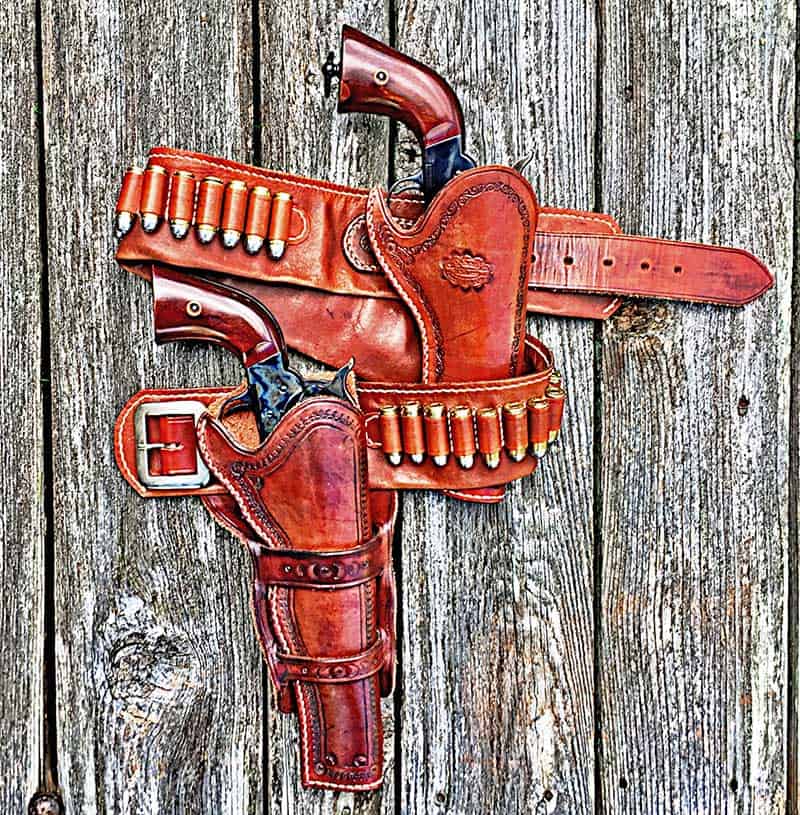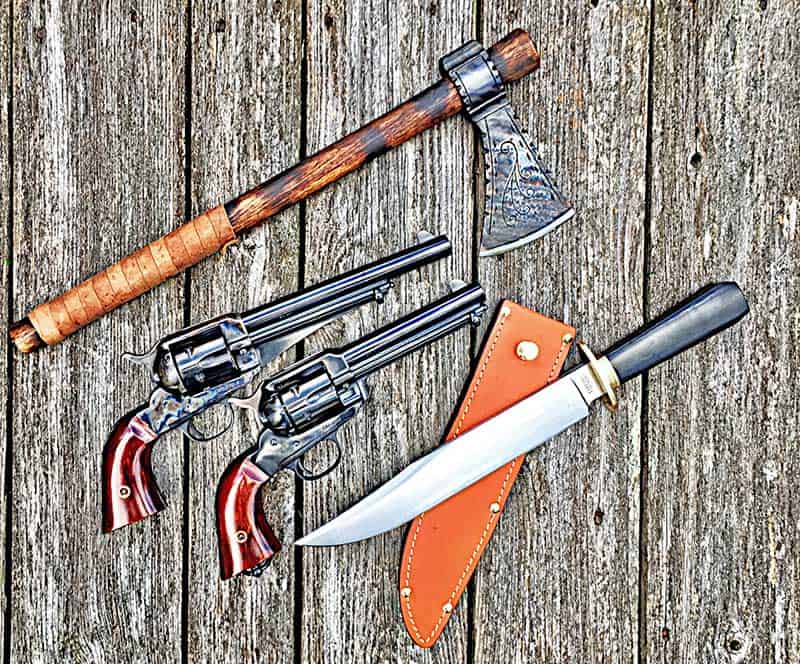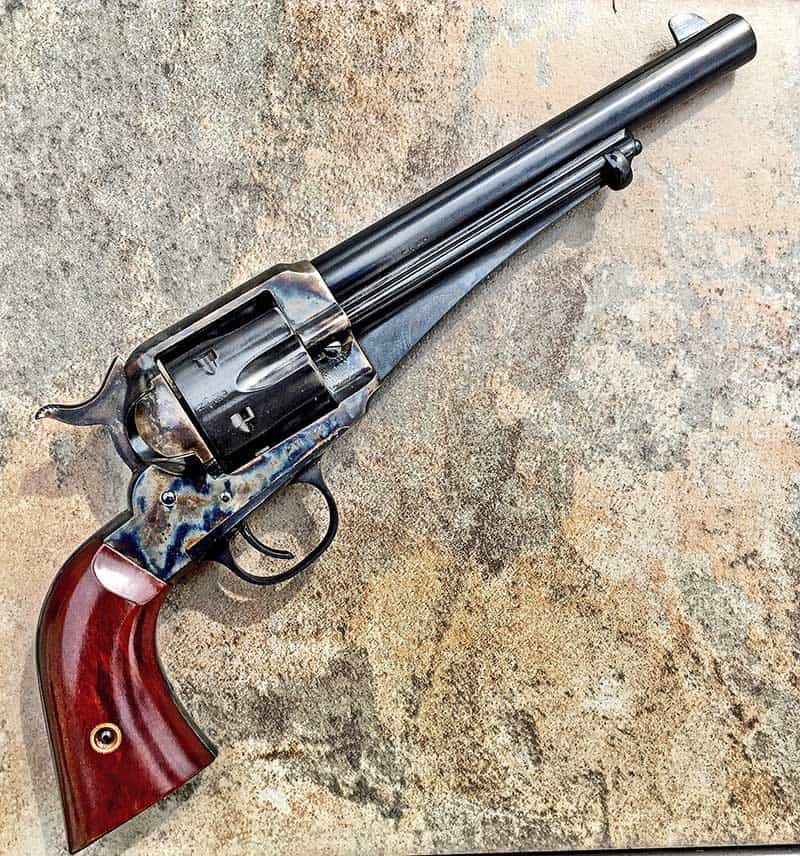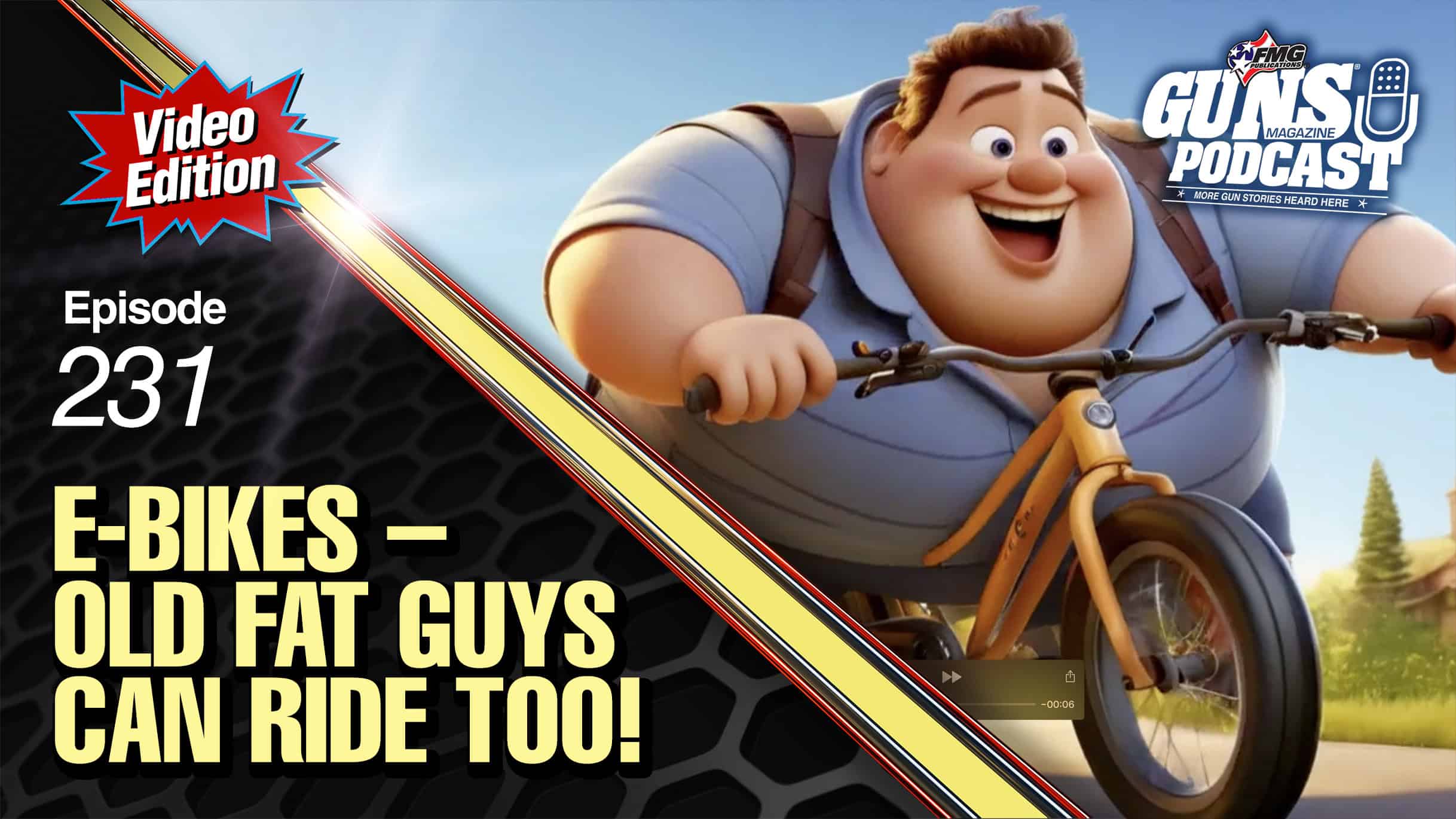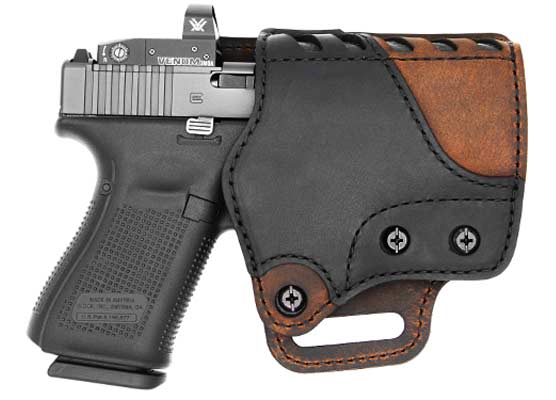Shooting The Outlaw!
Tank goes hands-on with Cimarron’s remakes of
the classic Remington 1875 and 1890 sixguns.
Every so often things seem to fall into place for us. When the head honcho and chief bottlewasher asked me to come up with something, I knew right away what I wanted to share with you. Most writers are voracious readers, naturally reading about our interests, and we read while researching topics to get a handle on things.
My suggestion was the Remington 1875, a gun that caught my attention when I was reading up on American scout, explorer and prospector Major Frederick Russell Burnham. He was a real-life, world-traveling adventurer, you might say, scouting on two continents in his role as an army scout.
His sidearm of choice was a hippo ivory-stocked 1875 Remington, chambered in .44-40. My interest piqued, I started researching the classic looking gun, as is the cycle of the majority of us gun enthusiasts, right? Liking what I read about F.R. Burnham and his trusty Remington 1875 revolver, I wanted to walk alongside him, so I could share the same experiences firsthand, with the very same gun he carried for decades. Plus, the Remington 1875 is just a flat-out, cool looking sixgun!
Cimarron To The Rescue
You can always tell a baby boomer whenever you’re inside a gift shop specializing in fragile, expensive items. He’ll have both hands stuffed down his front pockets, just the way his mom told him to do when he was a kid. “Don’t touch anything,” and we didn’t! But deep down, we want to get our hands on everything! It’s instinctual!
While researching guns, seeing them in pictures is nice, but the experience of actually holding one of these beauties in our mitts is what we desire. Feeling the smooth finish, smelling the oil and even savoring each distinctive “click” familiar to all single actions, as we slowly cock the hammer, makes it real. Naturally, the ultimate experience is shooting them!
Scarcity and value make guns like these unreachable for most. Here, Cimarron Firearms comes to the rescue for guys/gals like you and me. By replicating these old shooters at prices a working man can actually afford, we get to experience firsthand what those before us did.
Now we have a means of actually experiencing what those before us have, by holding, fondling and shooting a modern replica of an original piece too “collectible” and valuable to shoot.
Remington 1875
The first thing most people notice about the Remington 1875 is its distinguishable web underneath the barrel. The Remington New Model Army percussion revolver is the parent of the 1875, having similar size, looks and removable cylinder design. The web is a carry-over from the functional ram used on the 1858 cap-and-ball pistol, while seating a lead ball over a charge of black powder. Boring through the cylinder allowed the chambering of metallic cartridges, effectively converting the successful New Model Army into the 1875, the year it was brought into production. The Remington 1875 was also known by the names “Improved Army” or “Frontier Army.” Both citizens and lawmen alike enjoyed the big, sturdy revolver.
Competing against the Colt 1873 Single Action Army was tough, as Colt already secured contracts with the U.S. Army. Interestingly enough, the U.S. Government purchased just under 650 1875’s for use by the Indian police, and another 1,000 were sold to the Mexican government around 1880.
It’s said the Egyptian government ordered 10,000 units, but few were filled due to unpaid debts owed by the Egyptians for Remington rolling block rifles.
Around 25,000–30,000 units were manufactured between 1875 and 1889 in three different calibers: .44 Remington centerfire, .44 WCF, and .45 Colt. .45 Colt cylinders were a tad longer so they couldn’t be inserted in the wrong caliber gun.
Standard features included fluted cylinder; walnut grip panels; blued or nickeled steel, with gold- or silver-plating as options; as well as pearl or ivory stocks, carved or plain. A color case-hardened hammer and loading gate, along with a lanyard ring were also standard. Barrel length was a standard 7 1/2″ although a few were produced with 5 3/4″ barrels.
Cimarron Outlaw
Named after notorious outlaw Frank James who carried an 1875, Cimarron Arms’ modern replica, the Model 1875 Outlaw is made by Uberti to Cimarron’s specs and standards, closely following the original pattern. The most notable change is the addition of a base-pin cross-latch, which must be activated to disengage the base pin for cylinder removal.
When I contacted Cimarron for a test gun, they only had guns available in .45 Colt, which is fine as I love the round. I must say I’m very impressed with the quality of the Cimarron Arms Outlaw imported from Uberti! It is a very well-made revolver. Cylinder throats were a perfect 0.452″ as verified with pin gauges. Overall fit and finish is excellent. The base pin is much longer than standard Colt and Ruger single-actions, also.
The mushroom-shaped head on the end of the base pin protrudes from the web housing, under the barrel, providing a secure purchase while extracting it. The cross-latch must be depressed to pull the pin during cylinder removal.
The 1875 Outlaw has the same familiar four “clicks” present as you slowly cock the hammer. The same half-cock notch is also there, providing a free spinning cylinder, allowing loading, unloading and pulling the cylinder free from the frame, after the base-pin is removed.
The 1875 Outlaw also has the same loading gate single-action shooters are used to. Load one, skip one, load four more, close the latch, cock and lower hammer on an empty cylinder for safe carry. The Outlaw 1875 has a pivoting hammer-bar safety keeping the hammer-mounted firing pin from striking the primer should the gun be dropped. However, you should always carry the 1875 Outlaw with the hammer on an empty chamber.
The color case-hardening on the cylinder-frame and hammer of my sample is brilliant. The bluing is rich and deep giving the “Outlaw” the classy looks of the very well-made gun it is. My 1875 Outlaw has a 7.5″ barrel, although a 5.5″ is available. The hammer spur has traditional checkering and is completed in quality fashion.
The action is surprisingly smooth and the trigger pull measured at just over a creep-free 2.5 lbs.
Shooting The Outlaw
Picking up and working the action of this gun makes you want to shoot it. Already having a saddlebag full of handloads consisting of Hunter’s Supply 250-gr. cast HPs, stuffed over 8.0 grains of Winchester 231 inside a Starline Brass case and sparked with a Winchester LPP, I was ready to go.
Talk about a shooter! My first group at 50 feet was a ragged hole, just under 1″. Factory fodder included Black Hills Cowboy loads and some Federal 225-gr. swaged HPs. Everything shot very well. None of the above loads shot over a 2″ group.
Hungry For More
As happens much of the time, the deeper we delve, the more we find out and the more we want to know. Wouldn’t you know it, 15 years after the release of the 1875, Remington figures they want to trim back the identifiable web from under the barrel, calling this model the 1890.
First laying eyes on the 1890 in the Cimarron catalog, I knew I had to have one. (Isn’t that how it works out?) I quickly called Cimarron, requesting my newest quest, and it too, was on its way. As luck or fate would have it, Cimarron Arms had them available chambered only in .44-40 (but .45 Colt and .357 models are also listed). This was fine by me, as the 1890 was originally chambered in .44-40, making the 1890 more authentic in chambering, plus it would add variety for this article. Cimarron adds a nifty lanyard ring to the pistol grip, adding authenticity and smashing good looks to their 1890.
Once again, Cimarron Arms quality shone with their rendition of the Remington 1890. The bluing was stunning on this all-blued beauty.
Shooting The 1890
Once again, the action was smooth and measured trigger pull was 2 lbs., 14 oz. as confirmed with my Lyman Trigger scale. The 1890 is identical to the 1875, except for the trimmed back web-style ejector rod housing and addition of the lanyard ring.
Not having loaded the .44 WCF (.44-40) before, Lee Precision supplied me with dies and it was off to the races (or loading bench). A quick check of the cylinder throats revealed they were oversized at 0.431″.
I already had the perfect LEE mold, a six-cavity 200-gr. radiused flat-nose design, perfect for the .44-40. After powder coating them, I sized them 0.430″, as 0.431″ sized bullets wouldn’t chamber fully into the cylinder after being loaded into cartridges. Recipe for the .44-40 was 8.5 grains of Unique powder, sparked by Winchester LPP, all put together in Starline brass.
Black Hills once again came to the rescue with their Cowboy loads. I’ve got to mention, their rustic cartridge boxes have the looks of something you would have bought 125 years ago. Great job, Jeff Hoffman!
Groups for the 1890 ran a bit bigger, no doubt to the oversize cylinder throats. Regardless, it still showed acceptable accuracy, with groups running between 2″ to 2.5″.
Worth It
I was glad I had a chance to try out some classic Remington-style revolvers with the 1875 and 1890 revolvers and imagine I was out scouting with Burnham. The fact I was able to do this without breaking the bank is thanks to the efforts of Cimarron Firearms. Both models have MSRPs around $600. If you want to try some for yourself, be sure to check them out.
For more info:
www.cimarron-firearms.com
Ph: (830) 997-9090

Get More Revolver Content Every Week!
Sign up for the Wheelgun Wednesday newsletter here:

